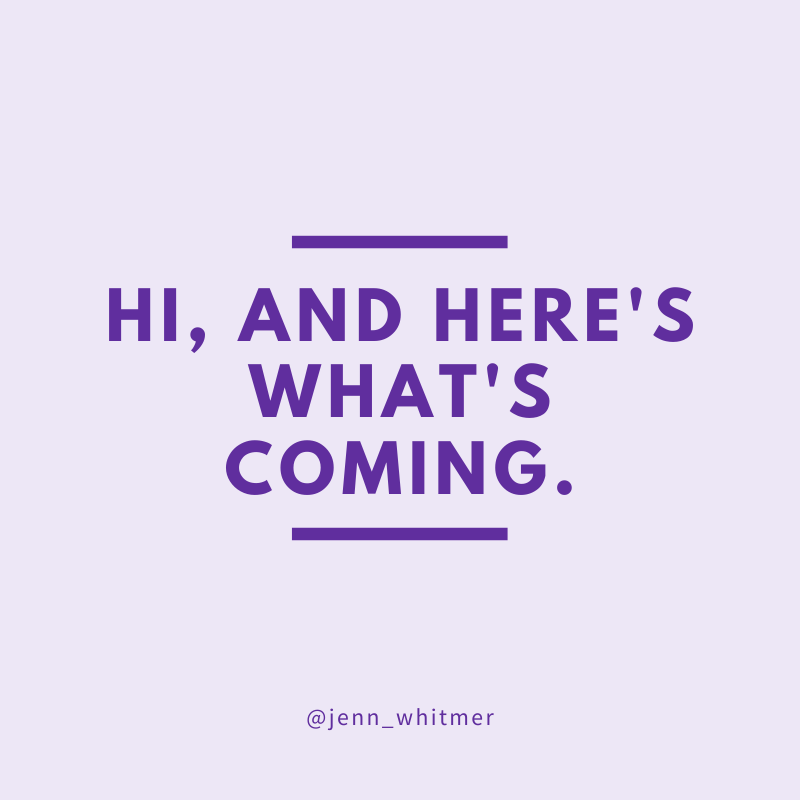So you see this, and I’m sure you have questions.
For many of you, there is no context for Jenn in a chicken pool toy.
So this is the crazy visual for my communication skill today.
I like to call this “Hi, and here’s what’s coming.”
Conversations have five parts: greeting, feedforward, business, feedback, and closing.
When one part is missing, your communication can fall apart. Like a cookie without that touch of salt. Or a random picture without context.
When we are just talking with people throughout the day, most of us naturally include all the parts. Even if we don’t, the conversations often lack intense emotions or challenging ideas. They don’t need as much structure to perform well.
When we bring disagreement or strong emotions into the mix, now the skeleton of a conversation becomes vital for supporting effective communication and bringing a conflict to a healthy conclusion.
So back to the chicken…what you’re missing here is the feedforward. There are a lot of options for what is happening here. I as the initiator haven’t given you any idea what they are though. Not so kind of me to just leave you hanging out to guess.
So first, a few helpful definitions:
Greeting— Hiya, friend!
Just what you would imagine. Saying hello, saying someone’s name, recognizing the other person. When your kids where little, it’s how you got their attention to make sure they were actually focused on you instead of the lego creation. For adults, it’s the same: acknowledging them as a person and allowing them to switch their focus.
Feedforward— Here’s what’s coming
Feedforward is the preview of the conversation and its purpose. This lets the other person begin to enter into a partnership of communication with you. It’s like the email subject line. It may be simple, “I want to ask you about lunch.” Or indicating difficulty, “I have some difficult news to share.” The more complicated and emotionally intense a conversation, the more critical feedforward is.
Business— Here’s the point.
This is why you’re having the conversation. This is the need or the news. When we think about conflict, this is the issue that is the point of struggle.
Feedback— These are my thoughts.
Feedback is what the listener gives the speaker. These are verbal and nonverbal cues, questions, ideas, or statements. This ranges from head-nodding indicating go on or reflective listening, “Is this what you’re saying?” And then exchanges can begin, with both people seeking to understand in a feedback loop. That’s the healthy plan. There can always be, “What is your problem?” and stomping off. Not what we’re going for here.
Closure— Thanks, bye!
This is the end of the conversation. It may include expressions of gratitude or plans of action. Ideally, the end of the discussion has solved the problem or expressed the news successfully. Sometimes, closure includes an acknowledgment that the issue isn’t resolved and needs revisiting.
Hi, and here’s what’s coming.
When entering into a conversation that may be difficult or shocking, the greeting and feedforward sections are vital to effective communication. You are getting the listener’s attention and helping them prepare to listen well.
Morning, Val. I need to talk to you about something that might be hard to hear.
Hiya, Kyle. I’ve got some difficult news to share with you.
Jasmyn, I want you to know something important that has come up.
Owen, I have some rather shocking information you need to know.
Desiree, I found this great chicken pool toy, and I need a favor.
The greeting and the feedforward keep the listener from being emotionally blindsided in the conversation.
It’s like the railing on the stairs. You don’t always need it, but it keeps you steady when you do.
Remember: Hi, and here’s what’s coming.
You’ll avoid the shocking chicken pool toy without context and set you on a strong foundation in any conversation.
Do you use feedforward in conversations?If you’re interested in bringing this and other communication skills to your team, contact me about giving a workshop to your organization.

COMMENTs:
0